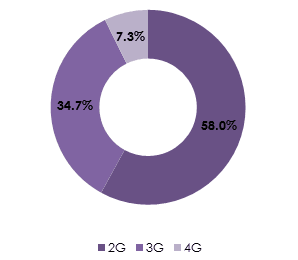Brazil was chosen by Chinese smartphone maker Xiaomi as the company’s first market outside Asia to hold operations and manufacturing locally, which will be handled by Foxconn. Xiaomi begins its operations betting on direct sales —at least for now, the privately held company will sell its smartphones only through its website. Another bet is the very competitive prices in a strategy to attract young people who are searching for an affordable smartphone.
Xiaomi chose to launch as its first device in Brazil the Redmi 2, a mid-level device, with a dual-chip supporting 3G/4G, an 8-megapixel camera with high-definition video recording, Qualcomm’s Snapdragon 410 processor and Xiaomi’s own Android-based operating system dubbed MIUI. It will be available beginning July 7 for $160 (R$499).
Xiaomi will also commercialize the Mi Power Bank, Mi Band, headphones, cases and screen protectors for Redmi 2. In the future, the company plans to include more Mi line of products in its sales portfolio in Brazil.
In response to the Xiaomi launch, Asus announced it has released for sale 1,000 of its Zenfone 5 devices priced at U.S. $3.20 (R$10) less than the Redmi 2.
The sales of smartphone have been rising in Brazil as users are buying their first smart device and experiencing data connectivity. The number of 3G users in the country has surpassed 2G users. According to IDC, in the first quarter of this year 14.1 million smartphones were sold in Brazil, 33% more compared to the same time period in 2014. The arrival of a new competitor is seen as good for customers as they will have one more option in the market.
Infrastructure: A new study from Ericsson ConsumerLab showed that 35% of Latin American 3G users and 20% of 2G users are willing to upgrade to 4G technology. Although in early stage of implementation, LTE has significant growth potential. According to Diana Moya, director of Ericsson Latin America ConsumerLab, after the users experiences an improved mobile data service from higher-speed serivces, consumption of online activities increases, especially those requiring higher data capacity.
More Latin American news:
Mexico — AT&T announced plans to investment U.S. $3 billion to extend mobile Internet access to 100 million consumers and businesses by the end of 2018.
Brazil, Spain — State-owned Telebras signed an agreement with Spain’s IslaLink to form a joint venture to launch and operate a submarine cable linking South America and Europe. The cable is said ti have more than 30 terabits per second of capacity and require U.S. $185 million of investment. 
Mexico — Mexico’s wireless landscape is still dominated by 2G technology. Of the country’s mobile subscribers, 58% use 2G services, while 34.7% use 3G and only 7.3% have “4G.”
Wondering what’s going on in Latin America? Why don’t you follow me on Twitter? Also check out all of RCR Wireless News’ Latin American content.

